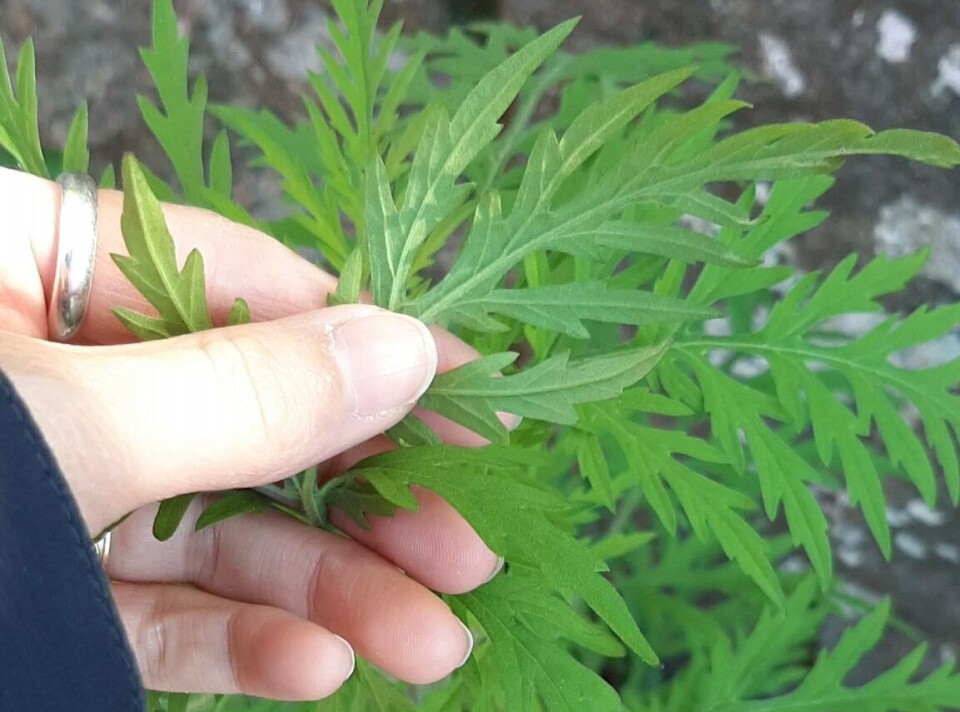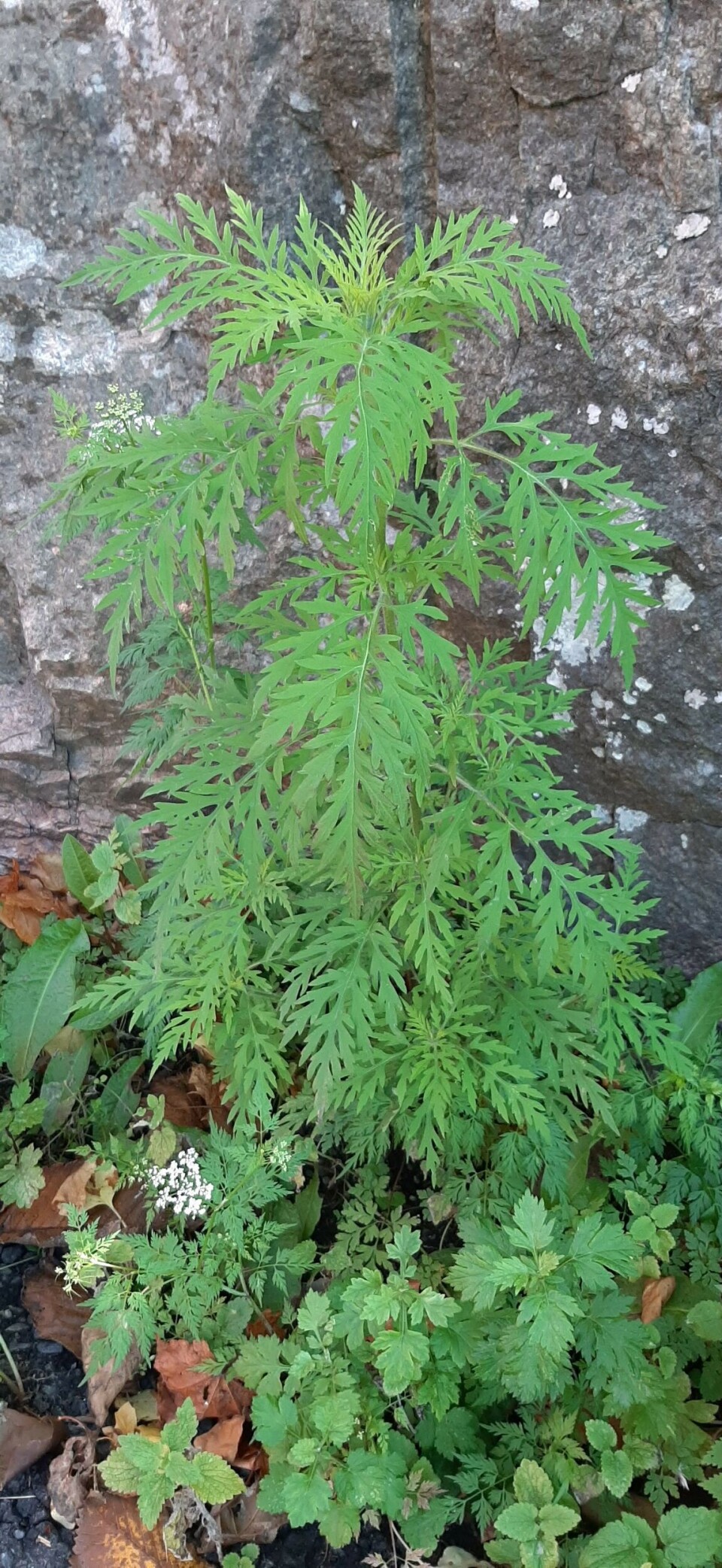THIS ARTICLE/PRESS RELEASE IS PAID FOR AND PRESENTED BY NTNU Norwegian University of Science and Technology - read more

Supergenes helped bring alien plant to Norway
If you are allergic to pollen, you should probably pay extra close attention to the common ragweed plant. Supergenes have now brought it to Norway.
The common ragweed plant (Ambrosia artemisiifolia) has spread rapidly in Europe and has intensified the pollen season for many allergy sufferers. Now the plant has arrived in Norway.
Common ragweed can extend the pollen season into November, but fortunately the species is struggling in this country.
“Common ragweed can be found in Norway, but for now it has no stable populations,” Vanessa Carina Bieker says. She is a researcher at the NTNU University Museum’s Department of Natural History.
Last autumn, Bieker discovered ragweed in Oslo. The Norwegian alien species list counts it as a low-risk plant since it has not yet properly established itself in Norway.
For now, the country’s climate is probably too tough for the plant. But increased temperatures could help it survive here too. It has already established itself in large parts of the world.
Supergenes are inherited together
Researchers have now found that special supergenes have helped ragweed to adapt to Europe. The supergenes are a main reason that the plant is able to adapt to new conditions so readily.
“These supergenes are large blocks of genes that are inherited as a unit by the next generation. These supergenes affect the plants’ characteristics, such as their size or when they flower, and are in turn important for the plants to be able to survive and reproduce under new climate conditions,” Michael D. Martin says.
He is a professor and expert in genetics at the Department of Natural History at the NTNU University Museum.
The researchers from the museum collaborated with scientists from several other institutions, including Monash University in Australia, and especially Kathryn Hodgins.
The research team recently presented their findings in an article in Nature Communications.

Invasive species are a major environmental problem
Common ragweed’s home turf is actually North America, but the plant found its way to Europe in the 19th century, probably through imported seeds and horse feed.
Alien, or invasive species that spread into areas where they do not belong are among the world’s biggest environmental problems. These new species destroy the balance that already exists between species in an area.
Invasive species can have major consequences at the expense of local plants and animals, such as the spread of toads, rabbits, and dromedaries in Australia – along with common ragweed.
Wild dogs and cats are a problem for species diversity in several parts of the world.
“We have to learn how invasive species evolve and spread before we can learn to control them. Then we can counteract the damage they do and limit their effect on species diversity, the economy and our health,” Martin says.
Important to study the genetic material
Studying plants’ genetic material is an important part of the fight against invasive species.
“When we identify the changes in DNA that enable such invasive species to spread so quickly, we gain a new weapon in our arsenal when we have to fight them,” Bieker says.
Vanessa C. Bieker is also an expert in genetics. The research team identified the entire genetic code in over 600 plants in order to detect these genetic changes. They found most of the plant specimens in herbariums and various museum collections in North America and Europe. Some of the specimens were as much as 190 years old.
“When you compare these old specimens with the living plants you find outside today, you can also identify the changes in the genetic material that have taken place over the years. And this helps pinpoint which genes have contributed to common ragweed spreading so quickly,” Bieker says.
The investigations show which gene variants dominate under different climate conditions, and which parts of the genetic material change over time.
Supergenes dominate in Europe
Among the most important discoveries is that the plants from the home continent of North America and those from Europe are different in important ways.
This finding involves basic genetics and evolutionary theory. When the conditions around the plant change, such as when they arrive on a new continent, some genes can give individual plants advantages at the expense of others.

Plants with these advantageous genes are more effective at reproducing. The advantageous genes are thus more often passed on to the next generation.
“The supergenes in the European plants enabled them to evolve rapidly during the invasion,” Martin says.
The supergenes enabled ragweed to colonise large parts of the continent by changing characteristics such as their size and the timing of their life cycle.
“These are properties that have had a major impact on ragweed’s success and therefore the planst’ production of highly allergenic pollen,” Martin says.
Importance of museum collections
The methods used by the researchers are completely new. Genetics is a field that has developed very rapidly in recent years. These methods would not have been possible just a few years ago.
The study also shows how novel genetic methods can be applied to old scientific collections to obtain completely new and enlightening results.
“This research shows the power in studying old specimens in herbariums and other museum collections. They can inform us about the recent spread, and sometimes very rapid evolution, of invasive species that have been strongly influenced by human activity,” says Martin.
Perhaps these research findings will help keep the common ragweed at bay. Allergy sufferers can at least hope so.
Reference:
Battlay et al. Large haploblocks underlie rapid adaptation in the invasive weed Ambrosia artemisiifolia, Nature Communications, vol. 14, 2023. DOI: 10.1038/s41467-023-37303-4
Read more content from NTNU:
-
Forever chemicals affect ducklings' genes while they are still in the egg
-
Why are pregnant women in Norway so worried?
-
Politics on Facebook: Populist parties choose divisive issues on purpose
-
Social media is connected to cyberbullying – but not how we thought
-
Forskere ved NTNU får nesten 24 millioner av EU for å lage nye strømomformere
-
This helps the youngest children enjoy school more





































